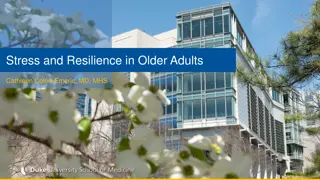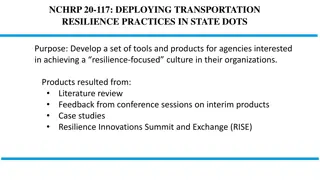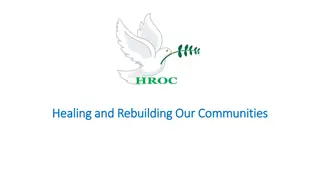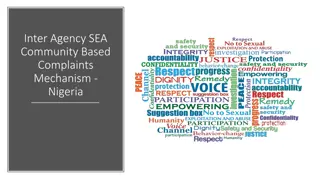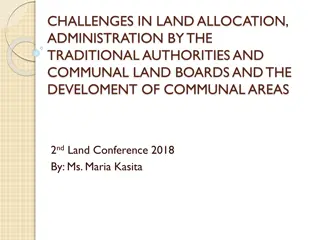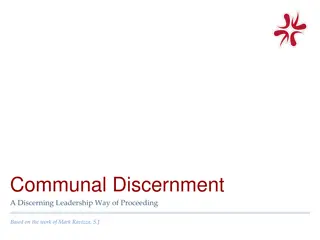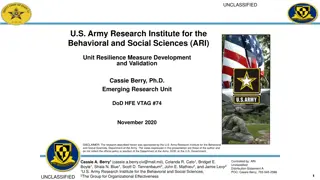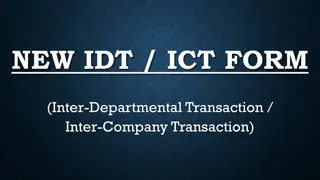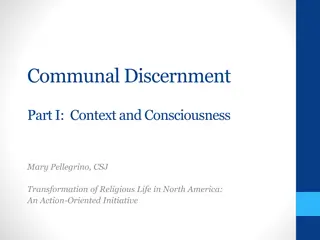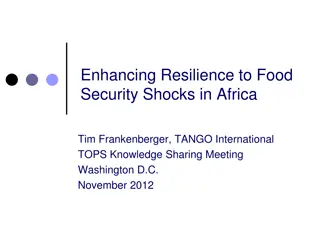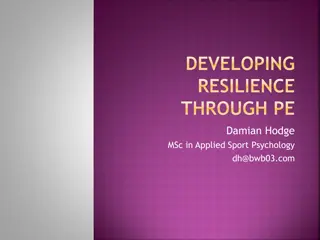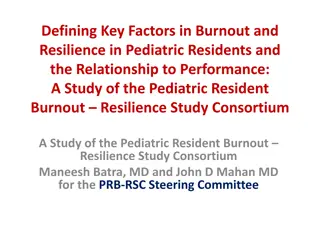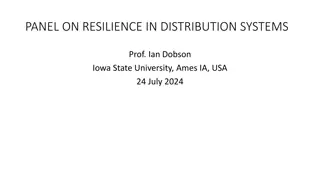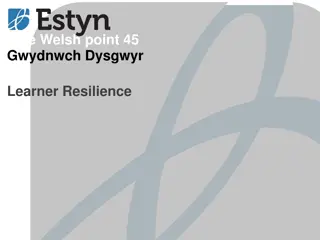Enhancing Inter-Communal Resilience Through VISTAS Program
VISTAS (Viable Support to Transition and Stability) is a six-year program in South Sudan aiming to mitigate communal violence and tensions in critical areas. The program defines resilience as communities managing conflict peacefully, fostering positive relationships for prosperous livelihoods and inclusive growth. By integrating trauma awareness and focusing on critical conflicts, VISTAS maximizes its impact over time. The approach includes trauma awareness, reconciliation processes, and countering rumors through media access. However, supporting entities that are not already functional and one-time interventions disconnected from a larger strategy do not work effectively. An example of successful inter-communal resilience building involves interventions in Lou Nuer-Murle conflict, including establishing early warning systems, peace dialogues, and exchange visits among leaders and community members.
Download Presentation

Please find below an Image/Link to download the presentation.
The content on the website is provided AS IS for your information and personal use only. It may not be sold, licensed, or shared on other websites without obtaining consent from the author.If you encounter any issues during the download, it is possible that the publisher has removed the file from their server.
You are allowed to download the files provided on this website for personal or commercial use, subject to the condition that they are used lawfully. All files are the property of their respective owners.
The content on the website is provided AS IS for your information and personal use only. It may not be sold, licensed, or shared on other websites without obtaining consent from the author.
E N D
Presentation Transcript
Viable Support to Transition and Stability (VISTAS) October 2018
Background VISTAS is a six-year program with the goal of mitigating the spread of communal violence and rising tensions in critical areas of South Sudan Particularly where the local conflict may have national implications or strategic importance to overall stability.
How does VISTAS define resilience? Communities managing conflict and tension through peaceful means and building positive relationships for prosperous livelihoods, inclusive growth, and lasting resilience.
Our Approach Trauma Awareness Sets foundation for reconciliation Peace Processes Address the issues Agree on resolutions Media Access to accurate information counters rumors Disseminate peace agreement resolutions Interdependency (example: trade) Reduces chances of renewed violence
What Works? Integrating trauma awareness into resilience programming Geographical and sector clustering (Layering, sequencing, clustering) Maximizes effect over time Focusing on critical conflicts rather than trying to address everything Supporting existing structures or actors Strengthen More inclusive
What Does Not Work? Creating or supporting entities that are not already functional Example: Building a traditional authority court where they aren t active One-time interventions that are not linked to a larger strategy Example: Vocational training that is not tailored to market demands Providing community infrastructure without ensuring training and commitment from stakeholder oversight committee
Example of building inter-communal resilience: Lou Nuer-Murle Long history of violence Cattle raids Child abductions Killings Interventions (2014-2018) Early warning systems (communication equipment) Reestablishing peace dialogues Following up peace agreement resolutions Exchange visits between leaders and other community members Increasing resilience - through improved communications; increased frequency and inclusivity of dialogues; return of cattle/abductees; building trust among communities; and exposing participants to other community traditions.





